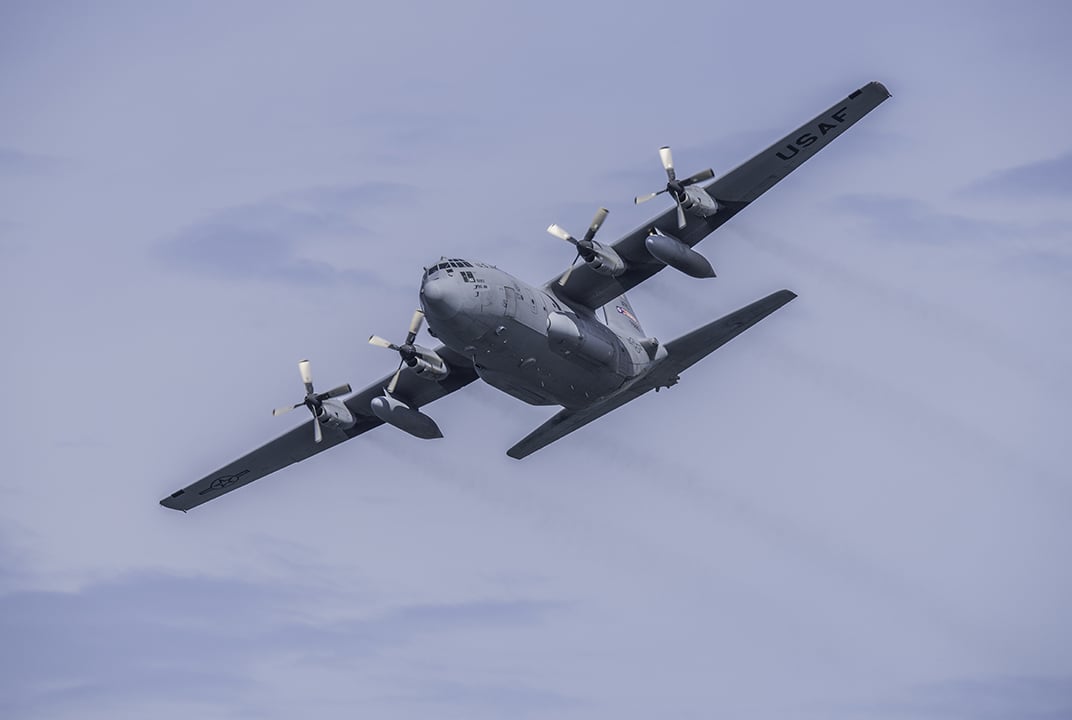Insight | The 35th Space Symposium: Moving forward swiftly to an integrated multi-domain architecture
The 35th Space Symposium: Moving forward swiftly to an integrated multi-domain architecture
Government
Inmarsat's Rebecca Cowen-Hirsch provides insights from leaders at the 35th Space Symposium in Colorado earlier this month about the overarching takeaway for a “need for speed” to take advantage of existing commercial SATCOM innovation.
After participating in the 35th Space Symposium in Colorado Springs, Colorado, earlier this month, I walked away with a resounding sense of confidence that Department of Defense (DoD) leadership is driving toward an integrated satellite communication (SATCOM) architecture with commercial capabilities foundational to support multi-domain operations. In addition, a clear consensus is emerging among government leaders to resolve – quickly – a lingering disconnect between legacy terminals and adopting multi-mode, multi-band terminal solutions supported by ongoing advancements in the satellite industry.
Specifically, the following developments signify what I consider as an encouraging evolution of the DoD’s space strategy and overall SATCOM acquisition culture:
- In addressing the importance of space to national security, acting Defense Secretary Patrick Shanahan said during his keynote speech “Our presence in space underpins the department’s ability to defend our nation, deter aggression and project power globally. Space is fundamental to our modern way of war.” He also noted that his department “is not moving fast enough to stay ahead. In the language of the private sector, the market has shifted and our old business model won’t survive. We have a choice. Change now, or maintain the status quo.” He indicated that, “As we look to future architectures, we have a once in a generation opportunity to consolidate and provide the department a unified, multi-domain command and control system for the first time.”
- Air Force Secretary Heather Wilson emphasized the criticality of the role which commercial satellite communications (COMSATCOM) plays within the military’s strategic plans for space “We must be able to leverage innovation in the commercial space industry to stay at the forefront of technology and ensure our access to space.” She also noted DoD’s involvement in pushing for all services and space mission systems to move toward multi-band satellite communications terminals.
- Underscoring the urgency to fix the terminal issues, Air Force Gen. John Hyten, Commander of U.S. Strategic Command (USSTRATCOM), called for better coordination between the builders of satellites and the services which deliver the terminals that must connect to them. Earlier, the Pentagon acknowledged that there are numerous legacy satellite terminals in use today that inhibit the department’s ability to leverage technological advancements made available by modern SATCOM, including those offered by industry. “This has been a significant challenge for basically my entire adult life…We have not done a good job in the lining up of the terminal programs with the satellite programs,” Gen. Hyten said at the symposium. “We end up with satellites on orbit and then we chase the satellites with ground systems.”
- Secretary Wilson announced that, within the “coming months,” she will brief Congress and DoD leadership about the findings of a 90-day “Space Strategy Study” by the Air Force to guide fiscal year 2021 budget decisions and “validate” current space programs and strategies. One of the study’s findings informed that LEO-based systems would be vulnerable during military conflicts and that DoD should not be taking that risk. In summarizing conclusions, Secretary Wilson noted that “different missions require different solutions” and that “increasing the number of satellites is not enough” to ensure that the Pentagon can “fight through” a conflict that involves attacks on US space assets.”
In the bigger picture, I observe that the collective statements from leaders during the symposium stress a “need for speed” in taking advantage of existing commercial SATCOM innovation – to resolve the terminal problems effectively and swiftly, while paving the path for an industry-government partnership which would result in a more agile space operating environment. It is only through the development of rich, complementary capabilities within a diverse, integrated multi-domain architecture, with commercial capabilities as a foundation, that we can ensure the required level of enhanced resiliency.
About the author
Rebecca M. Cowen-Hirsch is Senior Vice President for Government Strategy and Policy for Inmarsat Government, based in Washington. Ms. Cowen-Hirsch brings 25 years of defense, aerospace, and executive leadership experience to Inmarsat. As a decorated member of the Senior Executive Service (SES) in the U.S. Department of Defense, she served as the Program Executive Officer for SATCOM, Teleport and Services at the Defense Information Systems Agency (DISA) and in several key SES executive positions including the first Vice Component Acquisition Executive for DISA, with executive management responsibility for the acquisition oversight and horizontal integration of DISA’s products, services, and programs. Ms Cowen-Hirsch established the Defense Spectrum Office, serving as its first Director where her responsibilities included the development of national security spectrum strategic plans and policy, and national and international negotiation of defense spectrum issues. Her broad defense career ranged from systems engineering, experimental flight test, program management, spectrum management, and a wide range of executive leadership positions. Ms. Cowen-Hirsch was a rated experimental flight test engineer; was the first female civilian Mission Commander for the Advanced Range Instrumentation Aircraft (ARIA) mission, and was the recipient of an Exemplary Service Medal for her years of selfless service to the Department of Defense. Ms Cowen-Hirsch has a Bachelor of Science Degree in Electrical Engineering, conducted post-graduate studies in Engineering Management, and is a graduate of the University of Tennessee Space Institute Experimental Flight Test Program; the DoD’s Acquisition Management Program; and the Cambridge Senior Executive Leadership Program.


